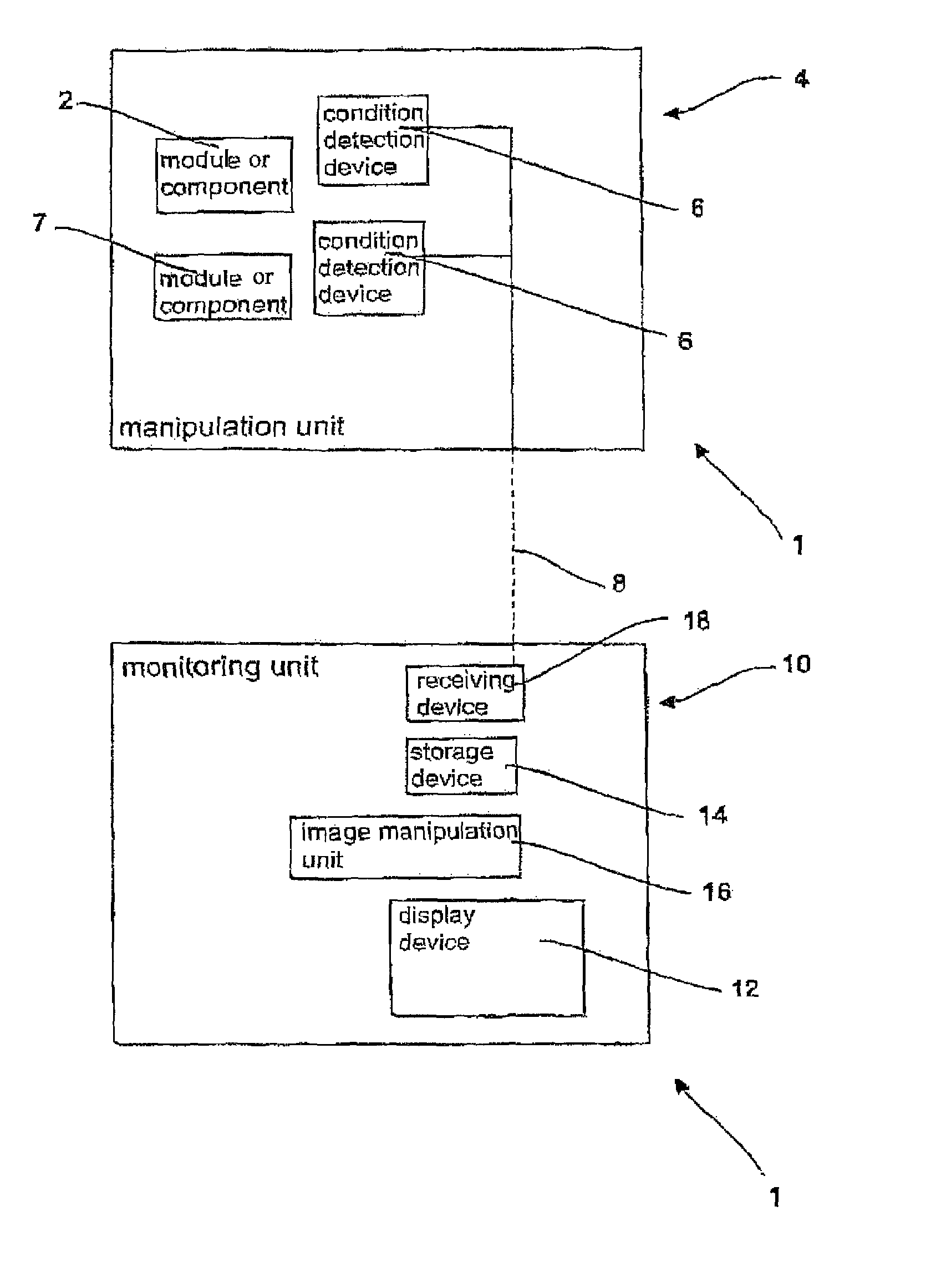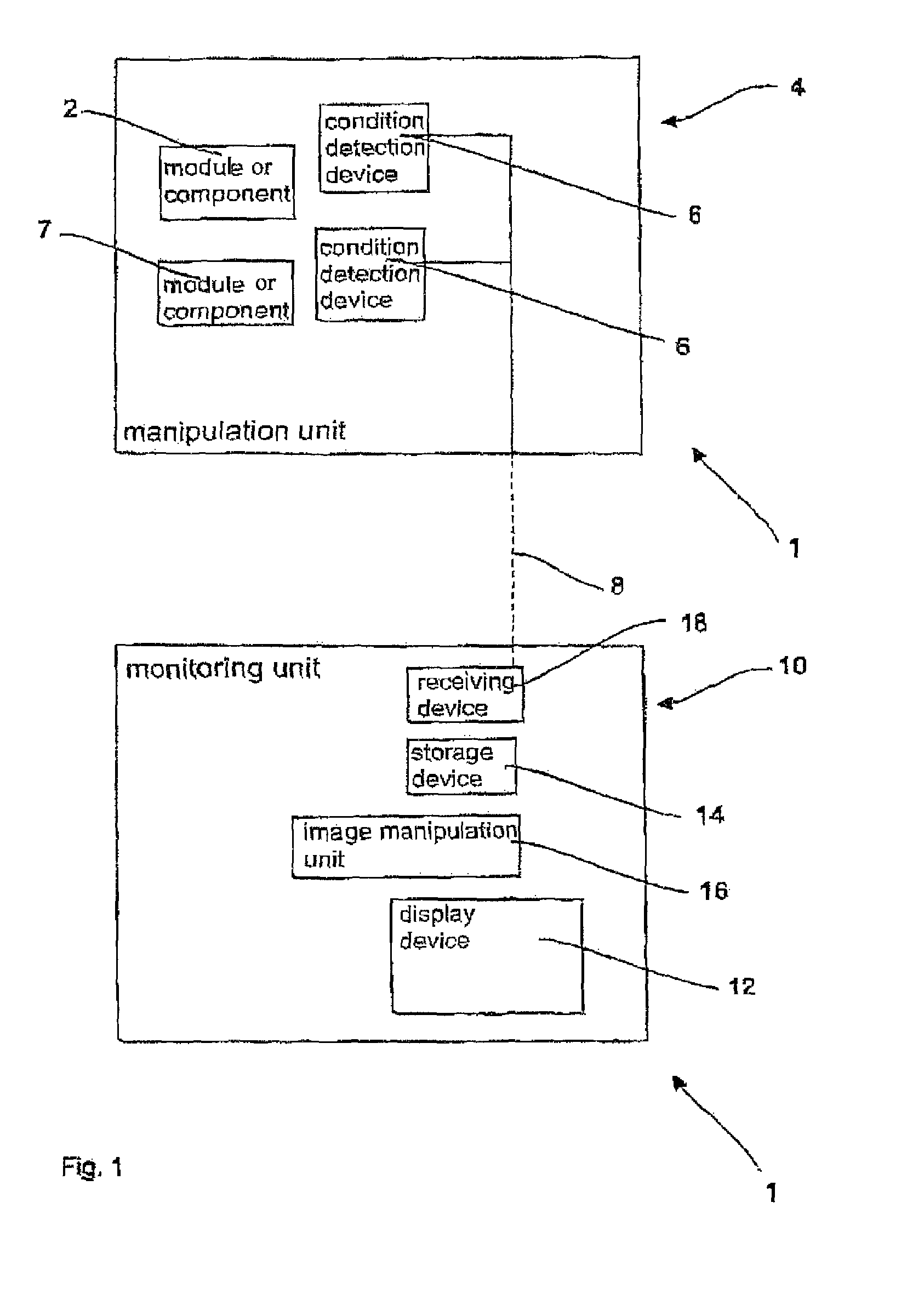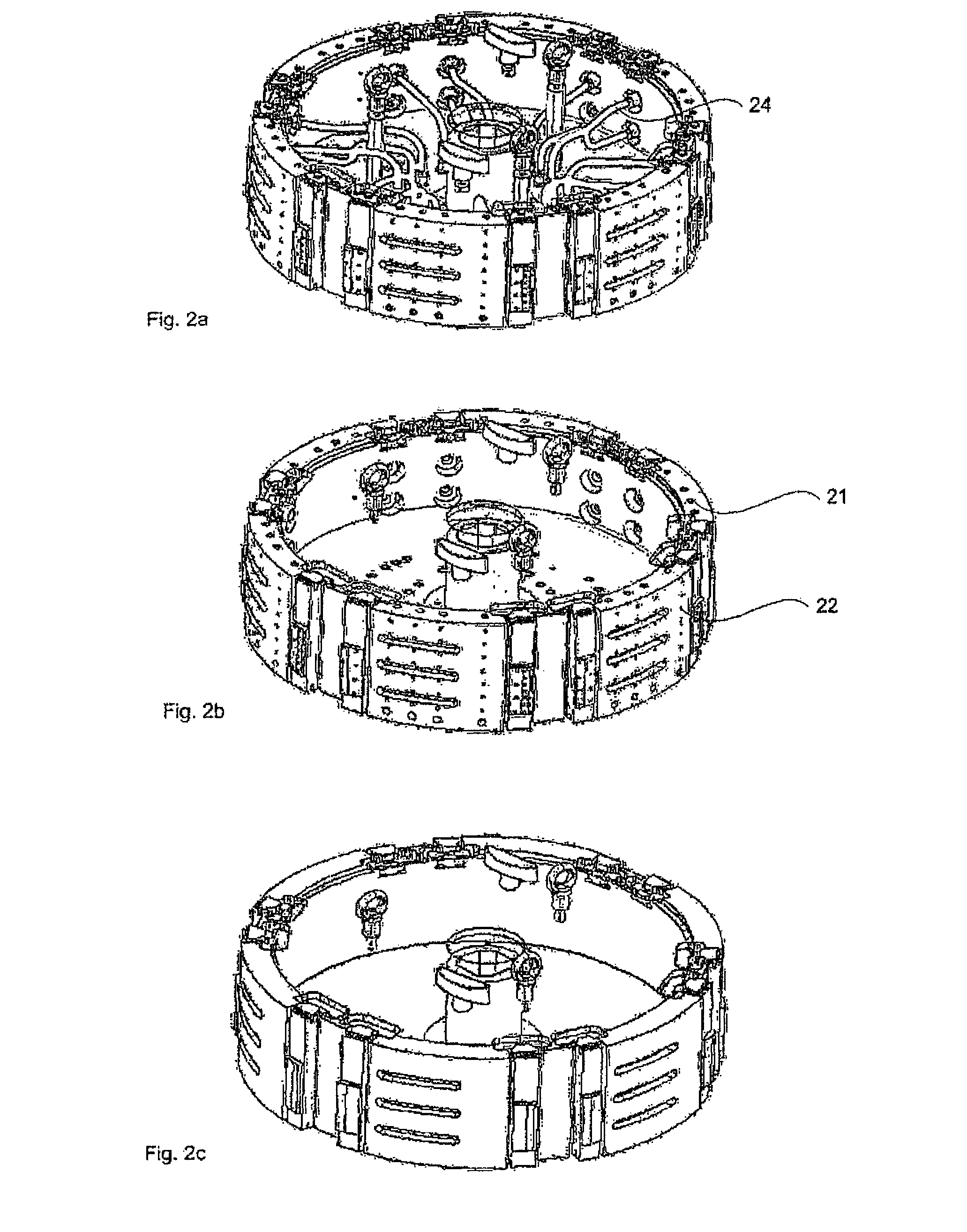Monitoring unit for a device for manipulating containers
a monitoring unit and container technology, applied in the direction of program control, total factory control, instruments, etc., can solve the problems of user carrying out a large number of unnecessary steps, laborious and time-consuming task of finding faults, etc., to improve the self-descriptiveness of the machine, improve the maintenance effect, and simplify the operation of the devi
- Summary
- Abstract
- Description
- Claims
- Application Information
AI Technical Summary
Benefits of technology
Problems solved by technology
Method used
Image
Examples
Embodiment Construction
[0036]FIG. 1 shows a block diagram of a device 1 according to the invention for manipulating containers. This device 12 comprises a manipulation unit 4 for manipulating containers. This manipulating unit may, for example, be a labelling machine. The manipulation unit includes herein a plurality of individual modules or components, of which, however, only two components 2, 7 are shown. A component may e.g. also be a part not directly operatively connected to the machine, such as e.g. a conversion parts trolley with spare parts. Those two components each have a condition detection device 6 allocated to them, which detects an operating condition of the component or also of the manipulation unit 4 as a whole.
[0037]The condition detection devices 6 send out signals to the monitoring unit 10 via a communications link 8, which signals correspond to corresponding operating conditions of the manipulation unit 4 or the components 2, 7. The communications link 8 may be a cable connection, but ...
PUM
 Login to View More
Login to View More Abstract
Description
Claims
Application Information
 Login to View More
Login to View More - R&D
- Intellectual Property
- Life Sciences
- Materials
- Tech Scout
- Unparalleled Data Quality
- Higher Quality Content
- 60% Fewer Hallucinations
Browse by: Latest US Patents, China's latest patents, Technical Efficacy Thesaurus, Application Domain, Technology Topic, Popular Technical Reports.
© 2025 PatSnap. All rights reserved.Legal|Privacy policy|Modern Slavery Act Transparency Statement|Sitemap|About US| Contact US: help@patsnap.com



